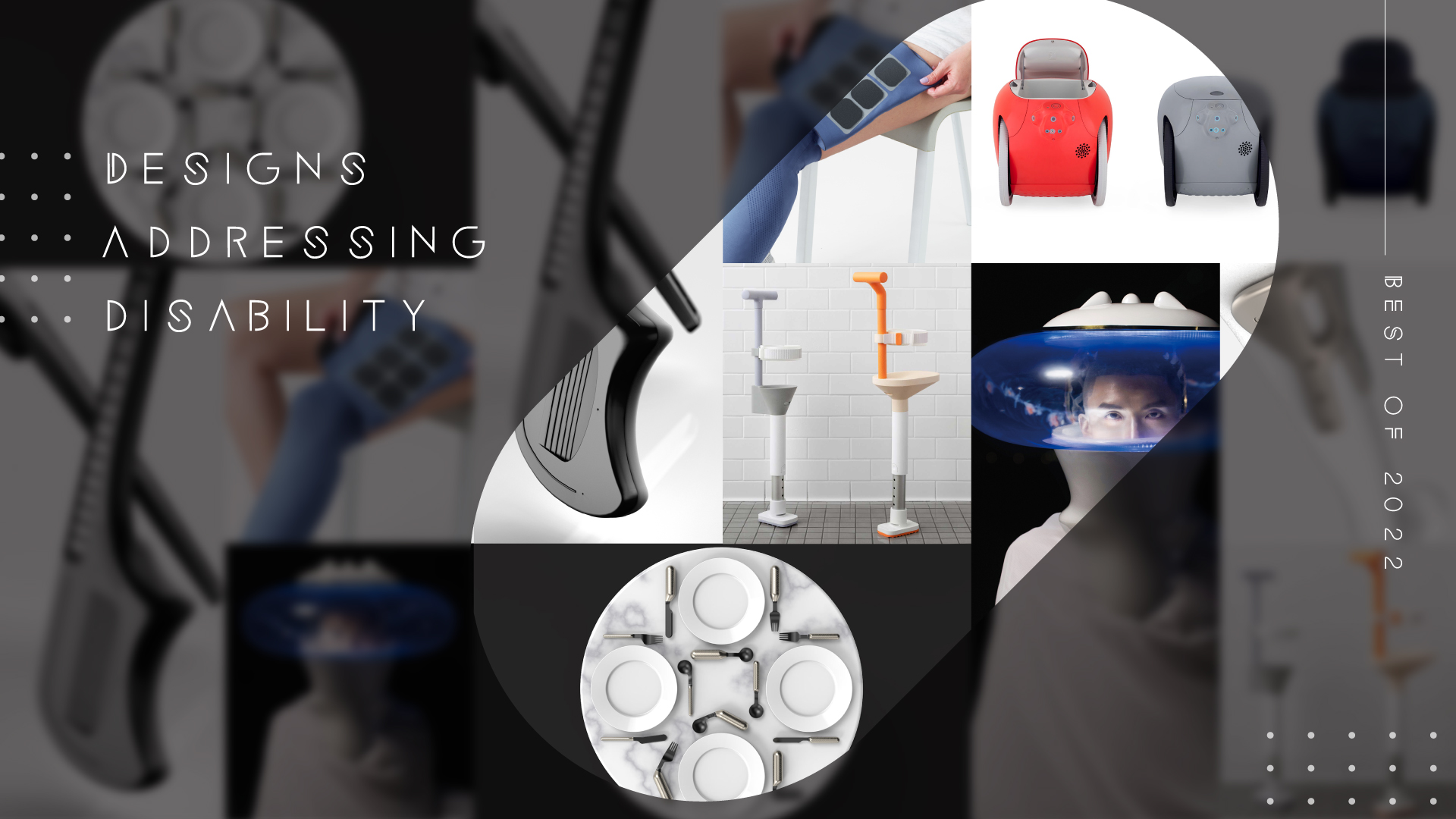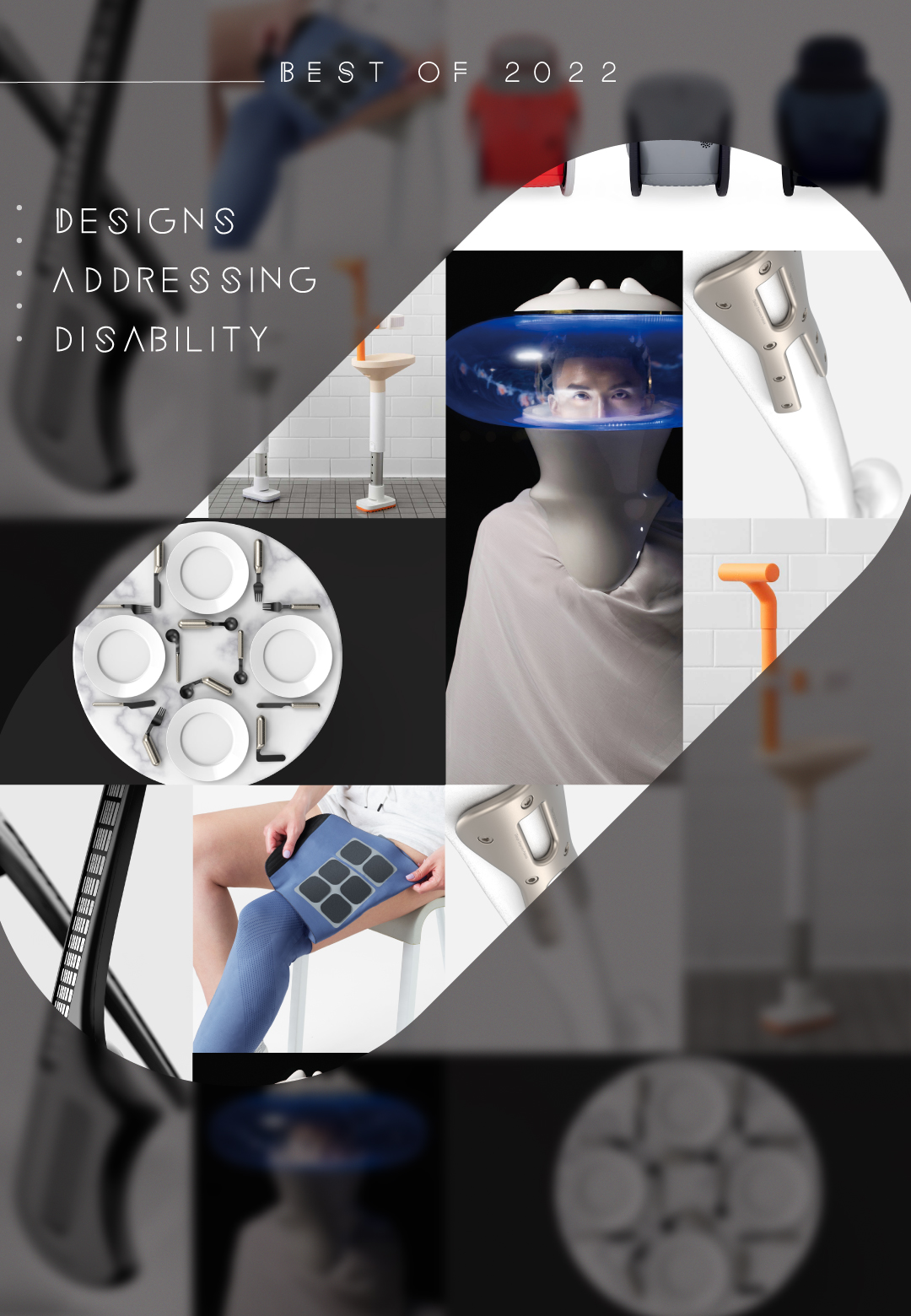In a world where improved focus on inclusivity and accessibility has begun to direct semantics, subvert stereotypes, and influence design languages, it is imperative to pivot visions with the intention of building a global station where people can experience diurnal as well as notable events, despite varied abilities. What’s also important is to make these designs accessible to all economic groups. Basing their creations on similar intentions, contemporary designers and technologists come together to innovate a kinder and more inclusive world.
Picking the Best of 2022 from amongst these product design endeavours, STIR enlists seven creations that help envision an equitable tomorrow.
Neural Sleeve by Cionic and fuseproject
The Neural Sleeve was designed by San Francisco-based technologist Jeremiah Robinson’s start-up Cionic, in collaboration with fuseproject, an industrial design and branding firm founded by Swiss designer Yves Béhar. The wearable product, built by Robinson to improve the daily lives of those with limited mobility, bears semblance to an athletic legging. This sensitive approach taken in conceptualising the design of the sleeve—wherein it looks like a sports product instead of a medical one—helps wearers don it with confidence. Jeremiah Robinson first grasped the plight of mobility-impaired people when his young daughter was diagnosed with cerebral palsy and struggled to move around. Driven by the desire to build an object that could ameliorate this daily physical toil, without explicitly bearing the countenance of a medical product, Robinson worked for four years to develop the Neural Sleeve, Cionic’s first launch.
The sleeve uses AI to utilise neural signalling and facilitate locomotion for all those affected by strokes, cerebral palsy, multiple sclerosis, progressive spinal cord injuries, and Parkinson’s. It comprises two technologies which, respectively, predict the mobility intent through brain-transmitted signals and facilitate a locomotive response through augmented currents. The Neural Sleeve helps in improving movement by nine degrees, a clinically enviable feat. In extending the scope of wearable design to accommodate not only the whims and fancies of seasonal trends but also the plight and predicament that accompanies disabilities, one can hope for veritable change through design.
VITAR by Eojin Roh, Seonjin Baek, and Yujeong Shin
Korean designers Eojin Roh, Seonjin Baek, and Yujeong Shin designed VITAR, a musical instrument that caters to the blind population. Featuring buttons bearing embossings of the braille script in place of struts, the guitar enables a more inclusive usage of the uniquely designed instrument. Although designed in favour of the visually impaired populace, the design also serves as an experimental aberration to the typical string and strut structure of guitars, and hence, invites all musicians to experiment and play with the buttons, creating distinctive melodies in the process. Additionally, VITAR is a suitable instrument for beginners, who often struggle with the discomfort associated with dexterously manoeuvring their fingers over the strings.
‘Voice In Sight’ by Ku Jia-Yu
Taiwanese designer Ku Jia-Yu’s Voice In Sight is a conceptual project that caters to multiple subjects with a headgear and costume design. It draws inspiration from wearable design showcased in dystopian comics and science fiction films, as well as those animated during scientific research. However, the central idea that guides its design is Ku Jia-Yu’s personal experiences as a person belonging to the deaf community. Imagining a future when the atmosphere may not be habitable, the designer conceptualised a protective human suit—made up of a robe and a bulbous headgear that provides an adequate view of the wearer’s face—that lights up upon receiving auditory signals, hence facilitating easy communication for those belonging to the deaf community. In addressing the reality of hearing impairment with colours—by converting sound energy to light energy—instead of stoic digital features, Ku Jia-Yu pays homage to the community.
Font Cutlery Set by Hop Design Studio
Sydney-based Hop Design Studio’s Font cutlery set, comprising 24 pieces, can be customised—albeit individually—to cater to the requirements of disabled individuals. All the pieces in the collection are 3D-printed and can bend and turn to accommodate different needs. Sitting at the brink of design and technology, it helps manufacture a dining experience inclusive of people with varied abilities. Michael Hoppe of Australia-based Hop Design Studio wanted to reduce the stigma associated with disabilities by creating paraphernalia that did not resemble orthopaedic accessories. The result is a series of typography-inspired cutlery—developed after thorough research and testing by the Australian designer—which, on the one hand, caters to various ailments, and on the other, presents an aesthetic and atypical product design.
Lytra by Harry Teng
Lytra is a simple and inexpensive modular product that enables amputees easily and independently manoeuvre themselves while showering, dressing up and conducting other miscellaneous diurnal chores. The waterproof prosthetic leg, built by industrial designer Harry Teng, is easy to assemble and dismantle. It can be configured and modified to suit different body types and heights as well as different usages. The Seattle-based designer was inspired by the Charles Eames and Ray Eames Leg splint to build Lytra. He improved on initial prototypes of the product by processing first-hand feedback received from amputees about his invention. In a market where prosthetic products and similar medical devices are unaffordable for most, Lytra fulfills its promise of staying physically and economically inclusive. It comprises six elements, namely a hand grip, a foot pad, a fitting system including a nylon strap and a silicone pad, the socket, a white polypropylene pole, and a stainless steel pole. While the socket of the prosthetic leg comes in five different sizes that can accommodate different amputees’ limbs, the stainless steel pole can be adapted to achieve different heights, and the nylon strap and silicon pad help keep the product intact. Components of Lytra can be replaced and interchanged upon their damage.
TBI DO2-3000 Implant System by Satyendra Pakhalé
Amsterdam-based designer Satyendra Pakhalé’s TBI DO2-3000 Implant System, made out of titanium alloy, is built to be implanted in place of different parts of the thigh or femur bone. It comprises three plates, the distal femur plate, proximal femur plate, and periprosthetic femur plate, which are analogous to different parts of the femur. Although it is the strongest bone in the human body, accidents and age often weaken or fracture it. Pakhalé’s implants, made using additive manufacturing, take into account the three-dimensional contours of the thigh bone and are easy to medically implant.
Gita by Piaggio Fast Forward
Boston-based tech company Piaggio Fast Forward’s Gita is many things, a robot, a smart vehicle, and a companion. It also comes with a storage space where people can stock their personal belongings. The robot is available in two sizes and is called gitamini and gitaplus. It comes with a battery life that can last for up to six to seven hours. The robot comes with a built-in speaker and is a perfect companion for solitary walks. While the invention can be used by anyone and everyone, it is especially useful for those who struggle with mobility ailments. Providing ample space for the storage of wallets and shopping bags, frees up the user’s hands, hence facilitating better mobility.






 Sign in with email
Sign in with email










What do you think?